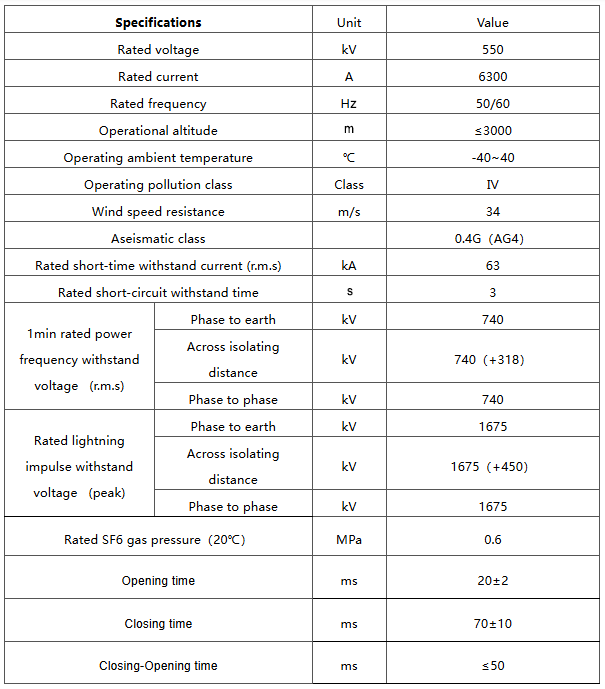| Brand | Wone |
| Model NO. | 550kV SF6 Circuit Breaker |
| Rated voltage | 550kV |
| Rated normal current | 6300A |
| Series | LW55B |
Description:
LW55B-550/Y4000-50 tank type SF6 circuit breaker is the 3-phase AC transmission equipment.Used in the power system of 550KV, can be realized the controlling, measurement and protection. It is composed of circuit breaker, current transformer and bushings for the wire’s incoming and outgoing. Circuit breaker is a single fracture design, equipped with the first domestic integrated block, high-power hydraulic operating mechanism, all of the hydraulic pipes built-in, no leakage.
This is a product based on new technology research and development, and its performance is at the leading level in the world.
Main Features:
Circuit breaker arcing chamber is a single fracture design, simple and reasonable structure, high technical content.
Strong breaking capacity, long contact electrical life(rated short circuit breaking up to 20 times), long service period.
As for the rectifier circuit breaker, except for the bushing unit is packaged independently, arcing unit, hydraulic operating mechanism, current transformer and other components are packaged as a whole unit, without on-site docking and adjustment, easy installation.
Circuit breaker unit is installed on site without opening the chamber, which can be filled the SF6 gas directly, to avoid the intrusion of dust and foreign bodies
There are almost no external pipe for this new type of hydraulic operating mechanism, the possibility of oil leakage is reduced.
When operating the oil pressure, hydraulic operating mechanism is controlled by the pressure switch automatically, can be maintained constantly the rated oil pressure without being affected by ambient temperature, at the same time, the relief valve in the mechanism can be exempted from the risk of overpressure.
After the loss of pressure, hydraulic operating mechanism has the function of not slowing points when the pressure is reconstructed.
The closing resistance of the product can be installed or removed according to the user’s requirements.
Technical Parameters:

What are the requirements for monitoring the gas decomposition products of the SF6 tank circuit breaker?
During the normal operation and interruption processes of a circuit breaker, SF₆ gas can decompose, producing various decomposition products such as SF₄, S₂F₂, SOF₂, HF, and SO₂. These decomposition products are often corrosive, toxic, or irritating, and therefore require monitoring.If the concentration of these decomposition products exceeds certain limits, it may indicate abnormal discharges or other faults within the arc quenching chamber. Timely maintenance and handling are necessary to prevent further damage to the equipment and to safeguard personnel health.






